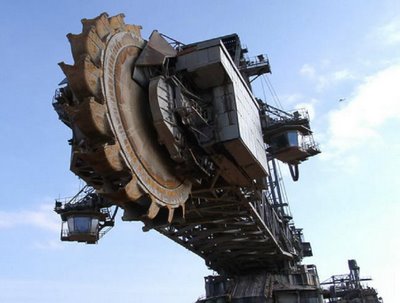
One thing that always bugs me is how much misinformation is perpetuated by so-called science shows and websites. Take
this FAQ on the giant squid. It's riddled with outdated ideas, dogma, misconceptions, and lies. So I'm posting a corrected version. Please send this link to anyone you know who is preparing to mount an expedition to find the giant squid, or who might go in the water in the near future.
DR. VECTOR'S GUARANTEED-TO-BE-ACCURATE GIANT SQUID FAQ
1. How big do giant squid get?
Most forms of life, in fact most objects in the observable universe, are limited by the Universal Formula for Length, which states that their length is twice the distance from the center to one end. But not squid. Their length can be up to four times that distance. How, you ask? Because of the tentacles. Just think about it.
2. What do giant squid eat?
The giant squid is the most vicious man-eater in the sea, surpassing even the Death Slug of Hora-bora for sheer rapacosity. A giant squid that was rammed by the aircraft carrier
Kitty Hawk in the Antarctic sea had a stomach full of pirates, animal rights activists, old Buicks, and the brains of innocent children.
3. How do giant squid capture their prey?
Many people think that the giant squid uses its tentacles to capture prey. This is a misnomer. The giant squid catches most of its victims by entangling them in an elaborate web of lies.
4. How do giant squid see in the depths of the black sea?
They don't! This is a trick question. There are no giant squid in the Black Sea. Ha ha, sucker!
5. How big do the suckers get?
P.T. Barnum once found one that was eight foot five and took 20 bucks off him, so pretty big I'd say.
6. What are the predators of the giant squid?
The giant squid fears only three things: the Death Star and entropy.
6b. Wait, that's only two things.
I know. I can't tell you the third one. That's how scary it is.
It's a common misnomer that sperm whales eat giant squid. That's wrong. First of all, the giant squid is the
giant squid, you know what I'm saying? I've seen 'em eat, like, a million pirate ships. I don't see any whale putting the smack down on that. Also, sperm whales are basically big dolphins, and everyone knows that despite their negative impact on the world's fisheries, dolphins are basically big streamlined hippies. If a sperm whale ran into a giant squid, they might wrestle, friendly-like, but afterward the sperm whale would probably bang on a drum for a while and maybe give the squid some weed.
7. Where do giant squid live?
Wherever iniquity blossoms and the prayers of the righteous go unheeded.
8. What is the geographic distribution of giant squid?
Oh, all right, if you're going to pin me down. The giant squid is found in all of the world's major oceans, which include the Atlantic, the Pacific, the Ural, the Circumpolar, the, uh, Asiatic, and the one with the boot in it.
9. How old do giant squid get?
Pretty damn old. My grandpa saw one when he was working on a shrimp boat in the Great Depression, and that was like a hundred years ago.
10. Are giant squid dangerous?
Not at all. You should slather yourself in chopped-up herring and go for a swim. But first remember to sign your earthly goods over to me, just for safe keeping.
11. Are you afraid the giant squid will attack the submersible?
Are you afraid of asking a coherent question?
12. Why is the giant squid considered a sea monster?
Because it
is one, moron.
13. Where are the best places to find giant squid?
Do we have to go through this again? Oceans, people. The Atlantic, the Copacetic, the Merovingian, the one at the corner of the map with the happy clouds blowing on it, and a couple of others. I saw a book called
Oceans of Kansas that had a bitchin' shark on the cover, so you might want to check there, too.
14. What technology is used to help you find the giant squid?
The most useful tools when hunting the giant squid are sonar, depth charges, alcohol, and human sacrifices.
15. What happens if you don't find the giant squid?
Three possibilities:
A. You didn't spend enough money. Get a bigger grant and send more ships next time.
2. Sasquatch said, "Cheese it!" and it's laying low.
D. It finds you.
Labels: Animals, Cracks Me Up, Crazy as Hell, Mockery















